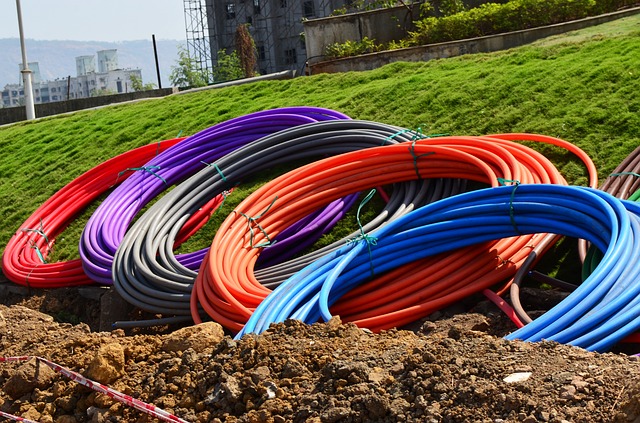Copper cabling uses electricity to transmit signals from one end to another whereas fiber optic Cable use light pulses to transmit signals as data. Fiber Optic cable can be broadly divided into two types: Multimode fiber and single mode fiber. The Multi-mode Fiber is commonly 62.5/125 or 50/125 micron while single mode fiber is commonly 9/125 micron. The Fiber Optic Cable further divided into 2 principal groups, tight buffered and loose tube.
Tight-buffered fiber: These Fiber cables are optimal for indoor applications. Instead of a loose tube, the fiber may be embedded in a heavy polymer jacket, commonly called tight-buffered construction, which has a two-layer coating. The first is plastic, and the other, waterproof acrylate. The Acrylate keeps moisture away from the cable. The Core is never exposed when bending or compressed underwater. Being more robust than loose-tube cables, they are best suited for moderate length LAN or WAN connections, long indoor runs, direct burial, and for underwater use. Tight-buffered cables may be easier to install because there is no gel to clean up and it does not require a fan-out kit for Splicing or Fiber termination.
Loose Tube Fiber: Loose tube cables are designed and optimized for harsh environmental conditions in the outdoors. They protect the Fiber core, cladding, and Coating by enclosing everything within fairly rigid protective sleeves or tubes. Many loose-tube cables contain a water-resistant Gel surrounding the fibers. The gel helps protect the fibers from moisture, making the cables ideal for high humidity environments, where water or condensation may otherwise be problematic. The gel-filled tubes can expand or contract with temperature changes, as well. Although loose-tube cables are subject to tough environmental conditions, they are not applicable when cables need to be submerged or where cables are routed around multiple bends. In such cases, the excessive cable strains can force fibers to emerge from the gel. although loose-tube gel-filled fiber optic cables are used for high-fiber-count, long-distance telco applications, they are an inferior design for the Local Area Network applications where reliability, attenuation stability over a wide temperature range and low installed cost are the priorities.
For any kind of Fiber Cabling, please contact us for free estimates. Check out our article on Different types of Fiber Cabling



